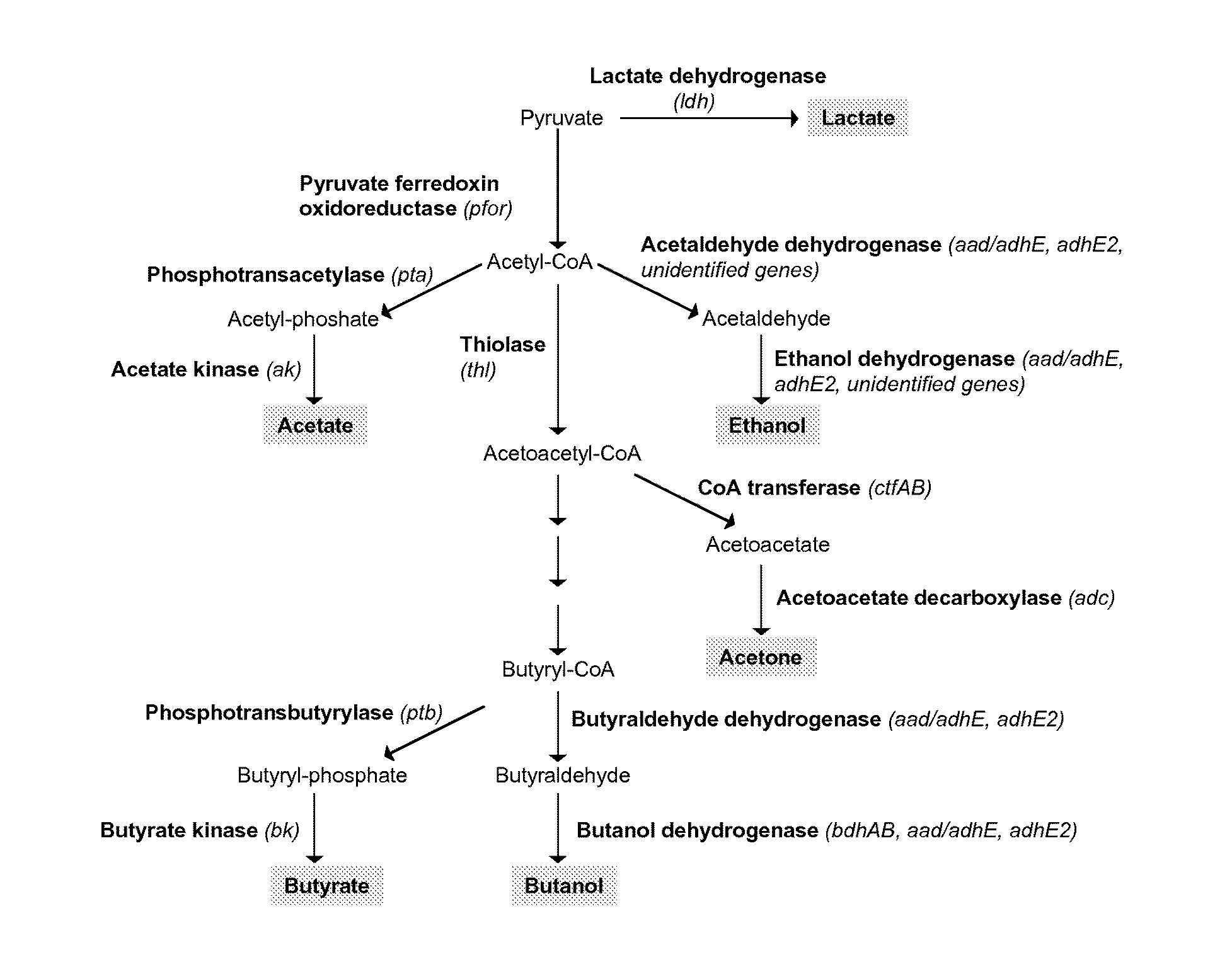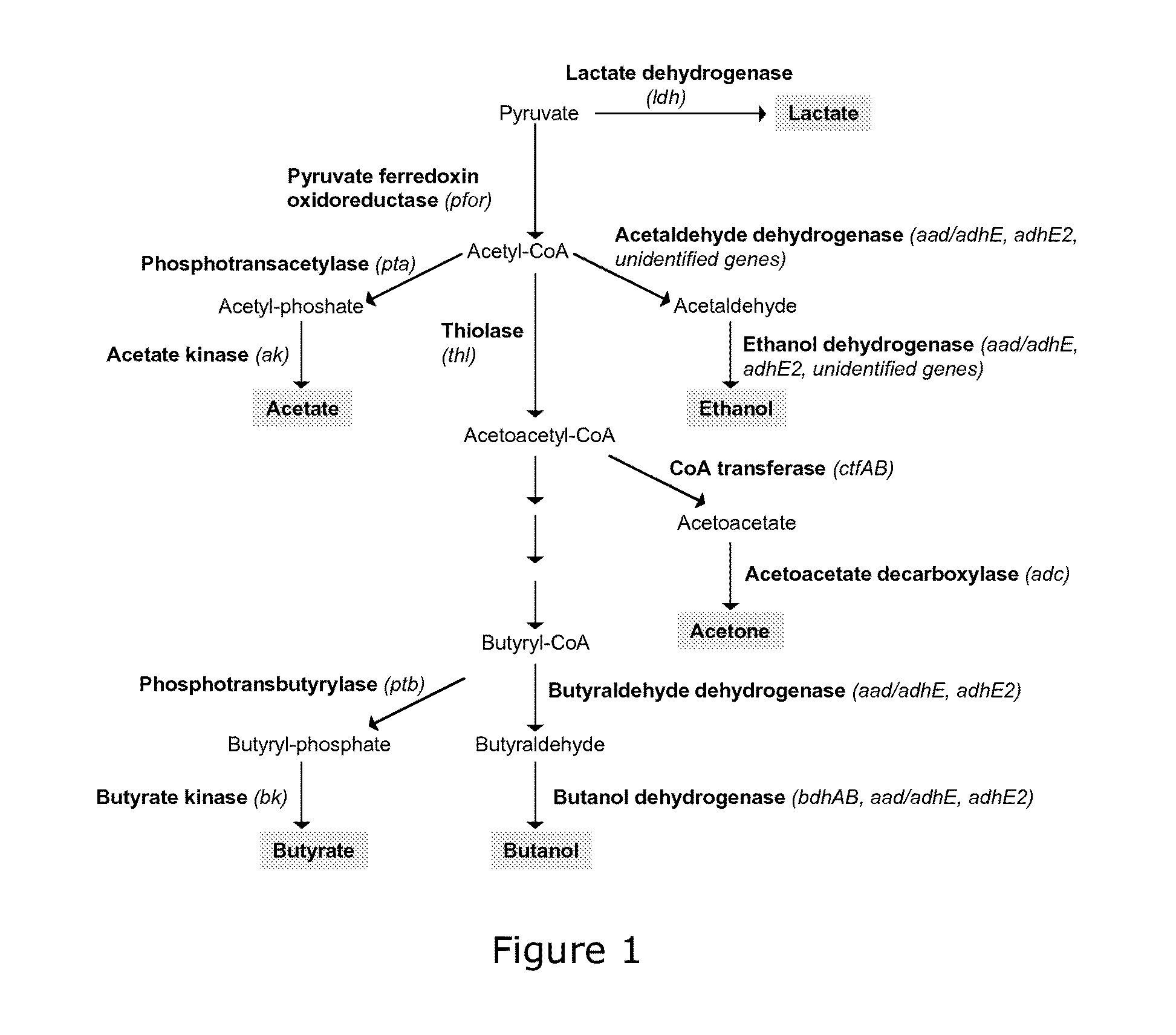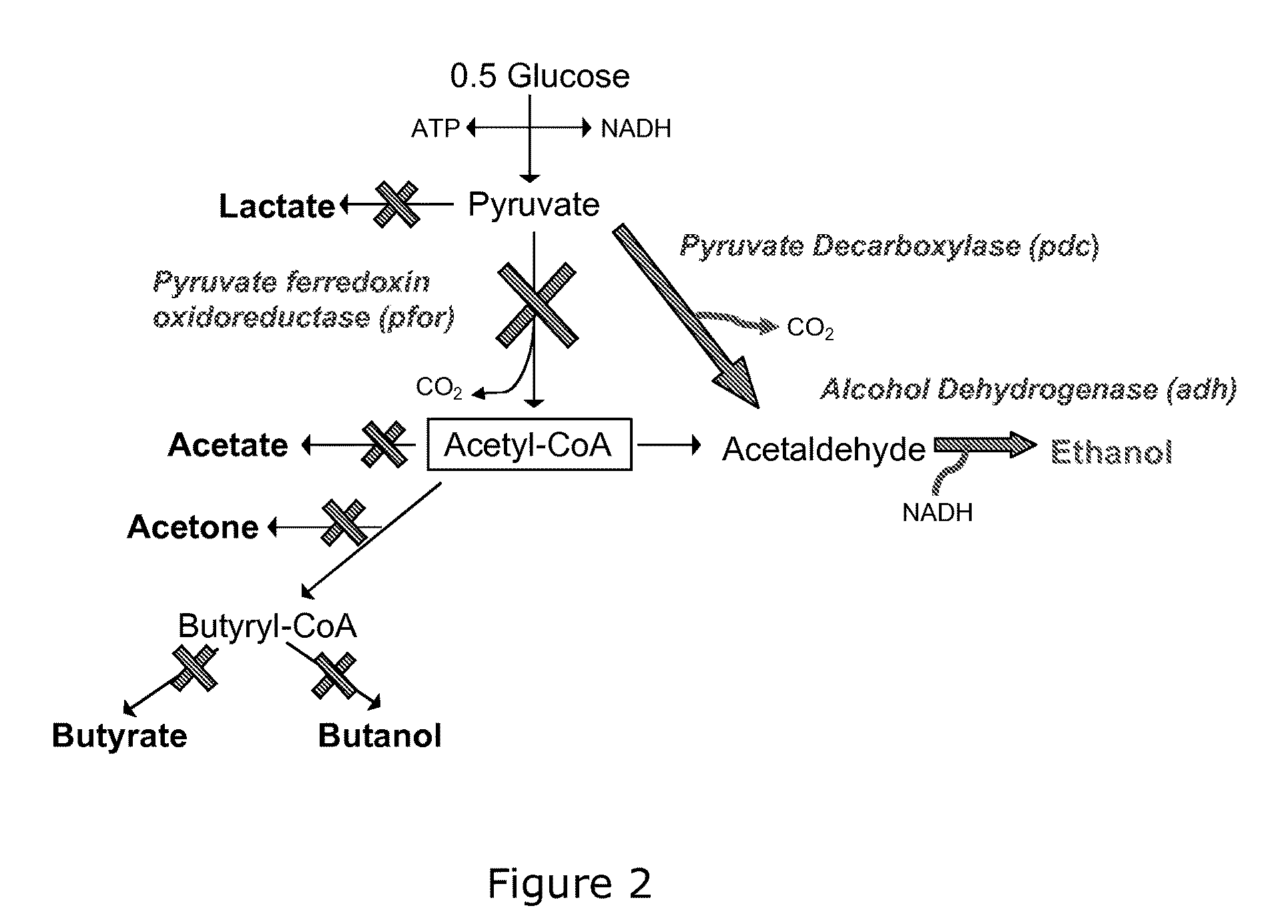Bioprocessing ligno-cellulose into ethanol with recombinant clostridium
- Summary
- Abstract
- Description
- Claims
- Application Information
AI Technical Summary
Benefits of technology
Problems solved by technology
Method used
Image
Examples
example 1
a) Construction of a Recombinant Strain of C. Acetobutylicum Secreting Cel5A from Clostridium Cellulolyticum
[0240]The DNA encoding the Cel5A was amplified while the restriction sites BamH1 and Nar1 were introduced at the 5′ and 3′ ends, respectively. After digestion with BamH1 and Nar1, the polynucleotide fragment was ligated to the pSOS952 vector (Perret et al. 2004. J. Bacteriol. 186: 253-257) digested by the same restriction endonucleases, thereby generating the p952-cel5A. The vector was subsequently methylated in vivo using the E. coli strain ER-2275(pAN1). The methylated vector was checked by sequencing and used to transform C. acetobutylicum by electropermeation. The secretion yield of Cel5A by the recombinant strain was estimated by monitoring the hydrolytic activity on amorphous cellulose and on CarboxyMethyl Cellulose. The secretion yield was approx. 5 mg / L.
b) Construction of Recombinant Strain of C. Acetobutylicum Secreting Cel9M from Clostridium Cellulolyticum
[0241]The...
example 2
a) Construction of Expression Vectors to Express pdc, adh1 or an Artificial pdc-adh1 Operon in Clostridium acetobutylicum
[0242]To optimize the heterologous expression of the pyruvate decarboxylase pdc gene from the gram-negative bacterium Zymomonas mobilis subsp. mobilis ZM4 in the gram-positive bacterium, C. acetobutylicum, a synthetic gene (Table 2) was designed according to the preferred codon usage used in C. acetobutylicum (Karlin et al., 2004. PNAS 101:6182-6187). Upstream of the coding sequence, the clostridial RBS (AGGAGG) was introduced, while the restriction sites BamH1 and SfoI were inserted at the 5′ and 3′ ends, respectively. After digestion with BamH1 and Sfo1, the polynucleotide fragment was ligated to the pSOS95 vector (GenBank accession number AY187686) digested with the same endonucleases to yield the pSOS95-pdc vector. The ADH1 gene (locus tag YOL086C) was PCR-amplified from Saccharomyces cerevisiae S288C genomic DNA using primers ADH13 1D and ADH—1R (Table 3) in...
example 3
[0245]Construction of C. acetobutylicum strains expressing via chromosomal integration the synthetic pdc gene of Z. mobilis, the adh1 gene of S. cerevisiae or the artificial pdc-adh1 operon as constructed in Example 2.
[0246]Expressions of the synthetic pdc gene of Z. mobilis, the adh1 gene of S. cerevisiae or the artificial pdc-adh1 operon are achieved by specific insertions of pdc, adh1 or the artificial pdc-adh1 operon in a targeted chromosomal gene / sequence via a chromosomal insertion technique. Integrants are selected on Petri dishes for resistance to erythromycin (40 μg ml−1).
[0247]As a result, the strains C. acetobutylicum (pdc+) and C. acetobutylicum (pdc+ adh1+) are capable of converting pyruvate to acetaldehyde and acetaldehyde to ethanol via the chromosomal expression of a pyruvate decarboxylase activity optionally combined with the chromosomal expression of an alcohol dehydrogenase activity.
PUM
 Login to View More
Login to View More Abstract
Description
Claims
Application Information
 Login to View More
Login to View More - R&D
- Intellectual Property
- Life Sciences
- Materials
- Tech Scout
- Unparalleled Data Quality
- Higher Quality Content
- 60% Fewer Hallucinations
Browse by: Latest US Patents, China's latest patents, Technical Efficacy Thesaurus, Application Domain, Technology Topic, Popular Technical Reports.
© 2025 PatSnap. All rights reserved.Legal|Privacy policy|Modern Slavery Act Transparency Statement|Sitemap|About US| Contact US: help@patsnap.com



